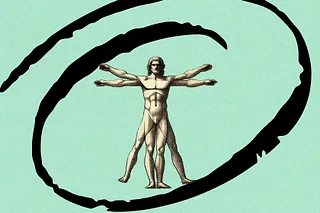Have we taken “well-rounded” too far?
“Well-roundedness” is the new North Star of education — but are we headed in the wrong direction? Chances are, you’re familiar with the chaotic rhythms of modern-day parenting: the soccer practices, guitar lessons, art classes, gaming clubs, and jiu-jitsu tournaments that shape our Saturday afternoons. But in the classroom, “well-roundedness” goes against the grain of genuine learning.
Let me explain.
In a conventional classroom, breadth of learning takes precedence over depth. Mastering the material doesn’t matter; only forward progression. One day it’s photosynthesis, the next the French Revolution, and the next, students are cramming for a test on quadratic equations. Regardless if they understand the material or not, they’re ushered through grade levels with breathless agency, like a traffic cop beckoning them across the sidewalk to get to the other side. The obsession with age-based progression over knowledge-based progression has blunted genuine education. It’s time to return to that.
Before we dive into the magic of mastery learning, we need to cover three things: polymaths, hurry sickness, and the skills that will make your kids really, really rich.
A brief history of “the well-rounded individual”
Well-roundedness is rooted in the Renaissance ideal of the polymath.
polymath (noun)
Definition: A person of wide-ranging knowledge or learning, especially someone who has mastered multiple fields or disciplines.
Don’t miss the key term here: “mastered.”
A true polymath, like Leonardo da Vinci, is an insatiably curious learner who immerses themselves into their work with discipline and vigor. The goal is not to learn a little about a lot, but to learn a lot about a lot. Such is the appeal of “the Renaissance man” or “the Renaissance woman.” These types whip out polished skill sets like party tricks: they’re fluent in Mandarin, undefeated in chess, and can effortlessly recall the Interstellar theme song on the grand piano at the airport. In the 1600s, the only feasible reaction to meeting a polymath was to marry them.
During the Industrial Revolution, things shifted. A new age was dawning — one of efficiency and utility. Factories needed workers who could do one thing well. Speaking four languages just for the heck of it was out. More practical skills, like assembling car parts for a steady paycheck, were in. Finally, after World War II, the pendulum swung one last time. College admissions became more competitive. (Who could pack their transcript with the most extracurriculars?) Progressive educators like John Dewey promoted the idea of educating the “whole child.” And by the late 20th century, parents were convinced that well-roundedness was the secret to their kids’ success.
This lands us where we are today: a culture of “well-rounded” busyness that has bled into the classroom.


